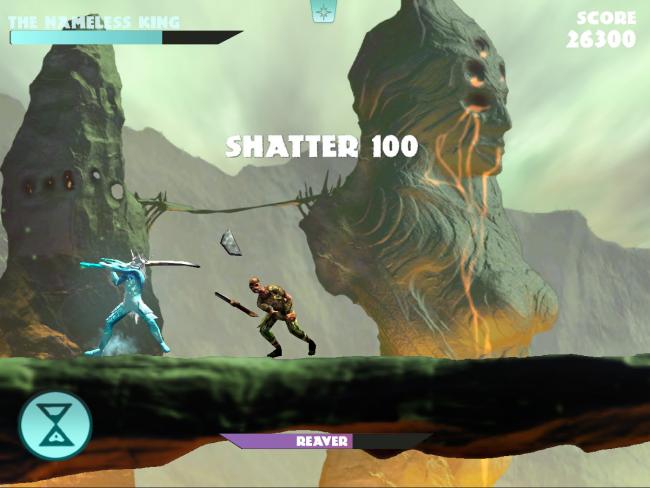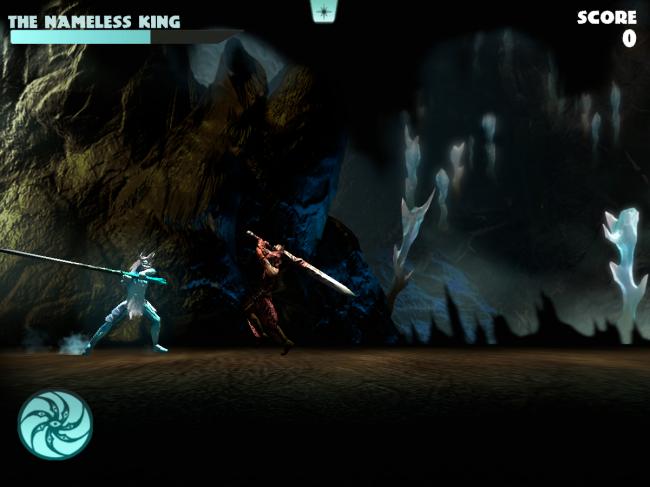- Wondering how to get Monopoly GO! free rolls? Well, you’ve come to the right place. In this guide, we provide you with a bunch of tips and tricks to get some free rolls for the hit new mobile game. We’ll …
Best Roblox Horror Games to Play Right Now – Updated Weekly
By Adele Wilson
Our Best Roblox Horror Games guide features the scariest and most creative experiences to play right now on the platform!The BEST Roblox Games of The Week – Games You Need To Play!
By Sho Roberts
Our feature shares our pick for the Best Roblox Games of the week! With our feature, we guarantee you'll find something new to play!Type Soul Clan Rarity Guide – All Legendary And Common Clans Listed!
By Nathan Ball
Wondering what your odds of rolling a particular Clan are? Wonder no more, with my handy Type Soul Clan Rarity guide.
God of Blades Developer Diary: The Art of Combat
Jason began his artistic career when his parents showed him how to put muscles on dinosaurs around age 4. Since then, he has been ceaselessly using every visual tool he can find to create creatures, places, cultures, and characters for all mediums. He has worked in theatre, television, books, advertising and most recently video games, coming off of the largest game production in history,Star Wars: The Old Republicfor BioWare. He crafted the environments for multiple planets prominently featured in BioWare’s MMO. Jason frequently spaces out staring at pictures of Iceland and a herd of prehistoric bison wandering towards a distant glacier is never far from his thoughts.

God of Blades is as much a love song as it is a brutal brawler. It’s a bittersweet ballad played for our favorite genre. It’s about remembering the things that made fantasy magical to us when we first stumbled upon it. But God of Blades IS a brawler none-the-less. It is a fighting game set at the pace of a freight train, filled with all the moment-to-moment drama of a glorious charge into a frenzied horde of enemies. Keeping all of that visceral fun intact as the production rumbles on is one of our top priorities.
It started with talking about what makes sword fights fun. Why are they fun to read, watch in a film, play in a game, enact with tree branches? Why do people love sword fights? I think sword fights are a great way to look at the complexities of people. Swordfights are excellent conduits for dramatic moments:–when everything is on the line, true personalities shine through. Shakespeare knew it, kung fu movies know it, and fighting games do a great job of expressing it. After all, you can learn a lot about a person after spending an hour in Soul Calibur‘s vs mode. I started out as a fight choreographer. 10 years ago that was my job. If I learned anything from that short (but fun) career, it is that every fight is a conversation.

Any duel forms a story with a beginning, middle and end. It may be a short story told with cold efficiency, an epic tale of intricate back and forth dialogue, or a one-sided, pounding barrage. So the sword combat in God of Blades had to be more than mindless mashing. As silly as it sounds, it had to be a way for the player to express themselves. We looked at ways for the player to have a “style” of fighting. We knew we needed the usual weapon choices of light, medium and heavy, but we decided to take things even further. We wanted a core framework for fighting that allowed player action to create exciting, emergent gameplay. After much trial and error, we decided to take the plunge and try something new. We built a dynamic, physics-based fighting system.
The physics system is truly the heart of God of Blades‘ swordplay. It gives both literal and figurative weight to the weapons, world and characters you encounter. This makes the game very unique both as a brawler and as an iOS title. God of Blades is not about frantically swiping across a screen, painting a target with glowing lines and triggering a pre-made animation. Rather, God of Blades is about the player’s swipe skillfully controlling the movement of physical objects (both the sword and the character) through stylized space. Once loosed, a sword can hit another physical weapon with force, perhaps shattering it and sending its fragments flying. If the sword hits an opponent, components of their armor may get knocked off as they stagger backwards from the force of a blow. Or, the sword can hit them and kill them–the force causing your foe’s frames to shudder as the power of a strike echoes through their wrecked bodies. A well-timed blow could, and often does, spin foes as the blade’s momentum sends them soaring head over heels. These are only a few of the many emergent outcomes of a conversation involving swords.

Once we had built this physical world into our game, we knew we could let the player tell amazing fight stories. Implementing physics allowed us to give those stories over to the player’s actions. When a player’s spinning parry shatters a cultist’s axe and send him soaring off of a bridge and into a lava-filled chasm, we didn’t script that. We simply built a world where these kinds of things can happen. We never know what’s going to actually happen. When you deliver the well-timed death blow, it isn’t a pre-made cut scene. That dramatic moment is different every time. What you see is happening because of what you did. You author and earn every single one of those moments.
We then made sure it could happen over and over again, so that you can develop your own strategies and feel your way through multiple fights, still getting unique encounters without loss of control. In God of Blades you can enter that quiet zone, where the dance of blades and bodies all seems to make sense and you sync up with the rhythms of combat. This kind of “perfect” play sustains an exhilarating momentum in the game, builds the tension, and is rewarded with point multipliers. After all, when you have a huge score multiplier at stake, even the little guys with knives begins to terrify you.
We knew we would have to toss in plenty of wrenches to make it fun. This is the main thing we are working on now. Different sword types, enemy types and physics-based sword powers that mix up the experience so you always feel like anything can happen. Balance is always a challenge, but since God of Blades is a single player epic, we get to have fun doling out more and more fantastic powers.
This core is just the beginning. We have an emotionally resonant, beautiful fantasy story running through it all. On top of all that, there is an even bigger story that the player gets to be pro-active in– with implications in the real world. We can’t wait to share all of this with everyone soon. Keep an eye out for more White Whale developer diaries like this one as we approach the release of God of Blades!
Jason Rosenstock is the creative director and co-founder of white whale games, an independent studio based in Austin Texas. Jason began his artistic career when his parents showed him how to put muscles on dinosaurs around age 4. Since then, he has been ceaselessly using every visual tool he can find to create creatures, places, cultures, and characters for all mediums. He has worked in theatre, television, books, advertising and most recently video games, coming off of the largest game production in history,Star Wars: The Old Republicfor BioWare. He crafted the environments for multiple planets prominently featured in BioWare’s MMO. Jason frequently spaces out staring at pictures of Iceland and a herd of prehistoric bison wandering towards a distant glacier is never far from his thoughts.
More articles...
Monopoly GO! Free Rolls – Links For Free Dice
By Glen Fox
Wondering how to get Monopoly GO! free rolls? Well, you’ve come to the right place. In this guide, we provide you with a bunch of tips and tricks to get some free rolls for the hit new mobile game. We’ll …Best Roblox Horror Games to Play Right Now – Updated Weekly
By Adele Wilson
Our Best Roblox Horror Games guide features the scariest and most creative experiences to play right now on the platform!The BEST Roblox Games of The Week – Games You Need To Play!
By Sho Roberts
Our feature shares our pick for the Best Roblox Games of the week! With our feature, we guarantee you'll find something new to play!Type Soul Clan Rarity Guide – All Legendary And Common Clans Listed!
By Nathan Ball
Wondering what your odds of rolling a particular Clan are? Wonder no more, with my handy Type Soul Clan Rarity guide.







